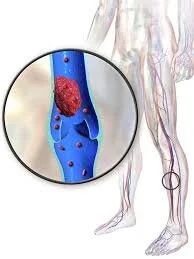Deep vein thrombosis with pulmonary embolus--in short, thromboembolic disease--is one of the most common and dangerous of all complications after surgery. This is a serious and often fatal complication. The best way to address thromboembolic disease is prevention and the most effective way to prevent the major consequences of venous thrombosis--death from pulmonary embolism--is by use of effective prophylactic measures. The threat of thromboembolic disease is correlated with certain risk factors, for example increasing age over 40 years, extent and duration of surgery, and past history of thromboembolic disease.
The best and most commonly used prophylactic modality to reduce the incidence of thromboembolic disease is anticoagulation when there is no absolute contraindication to its use. Initially, that was though heparin. Prophylactic heparin came into widespread use after “low-dose” or “mini-dose” heparin, 5000 units sc q8h or q12h, was found to be effective.
Anticoagulants have been used for the treatment of venous thromboembolism for more than 70 years. The landmark study by Barrett and Jordan, published in 1960, established heparin and warfarin as the standard treatment for venous thromboembolism by showing a dramatic decrease in fatal pulmonary emboli in patients who had anticoagulation therapy compared with untreated control patients.
Other measures widely used are Ace bandages, graded pressure elastic stockings and pneumatic intermittent compression devices placed on both lower extremities.
Deep vein thrombosis & pulmonary embolus medical expert witness specialties include vascular surgery, pulmonology, interventional radiology, hematology, emergency medicine, neurology, cardiology, anesthesiology, and forensic pathology.

